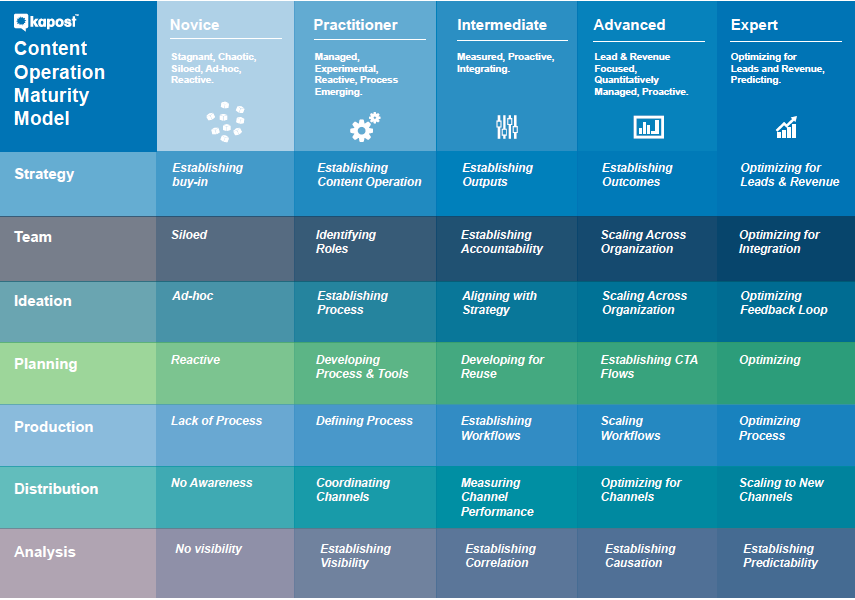Millennials aren’t the only group affected by Peter Pan Syndrome.
The perceived inability or downright refusal to grow up, accept accountability, and shift unsustainable patterns afflicts most B2B marketing organizations. Specifically, marketing is not aligned with sales, and—a more widely ignored problem—marketing is not aligned within their own department.
The Content Operation Maturity Model: Where Do You Fall?
And these two problems are costing companies. B2B companies’ inability to align sales and marketing teams around the right processes and technologies has cost them upwards of 10% or more of revenue per year.
Yes, change is hard. And, yes, change is even harder in slow-moving enterprise organizations with thousands of employees and lots of red tape to cut through.
While Neverland may feel comfortable, well-known, and exciting right now, you’ve probably heard the ominous and approaching tick-tick-tick of change. And it’s getting louder every quarter until, finally, you’ll find yourself face to face with that ugly crocodile of proliferating distribution channels, technology investments, content alignment, and tracking buyer behavior from first touch to new revenue.
The fear of change, though, is worse than making the change.
The Content Operation Maturity Model
A lot of companies see the benefit of developing a content-focused marketing organization, but feel stymied by the amount of perceived effort to make the change.
We’ve worked with hundreds companies over the past five years to create and refine their content marketing practice, establishing benchmarks and best practices along the way.
As we looked at the data from these engagements, we realized that each company goes through very similar stages in their development—regardless of size, industry, or internal structure.
This led to creation of the Content Operation Maturity Model. The model is designed to help companies quickly and simply understand where their current content marketing efforts are across seven best practice areas, and lay out actionable steps on how to move forward.

At first pass, do you see yourself on the left side of the table? It’s okay, more than 80% of companies fall in the Novice or Practitioner categories, so you can take a deep breath. You are not alone.
Many companies, whether or not they are new to content marketing, find themselves struggling to move beyond the early stages of the maturity model. It could be trouble breaking down departmental silos. Maybe it’s creating enough quality content. Perhaps there is plenty of content but very little visibility into who is creating what and how it all works together.
Regardless of the underlying reason, organizational stagnation can derail even the best content marketing plans. But that doesn’t have to be the case.
Novice
For companies that find themselves in the Novice category, the first step is to identify key roadblocks. This could be siloed departments and a lack of visibility into what content is being created or how it’s being distributed. An honest assessment of your current situation will quickly uncover these challenges.
Practitioner
Some companies have started their efforts and find themselves in the Practitioner category. They have identified the key roadblocks but still feel reactive in their efforts. Building organizational support is the first step to moving forward. With integration between departments, personas and buying stages can be established and content planning can begin taking shape.
Intermediate
Intermediate companies have established content objectives, defined roles and responsibilities, and developed content pillars around which to execute. Analytics and organizational integration are key to evolving. This includes developing content in conjunction with key revenue and lead goals and quantitatively managing the process with full visibility across the organization
Advanced to Expert
Once you’ve reached the Advanced stage you are becoming a best-in-class content marketer. The next steps become apparent as you optimize every facet of the operation. From tweaking the distribution strategy to establishing feedback loops, Expert content marketers know that it is not a destination they’ve reached, but an ideal for which they continually strive.
The first step to change is acknowledging where your company is on the maturity model right now. Only then can you make the right decisions to implement the change your organization needs to be successful.
